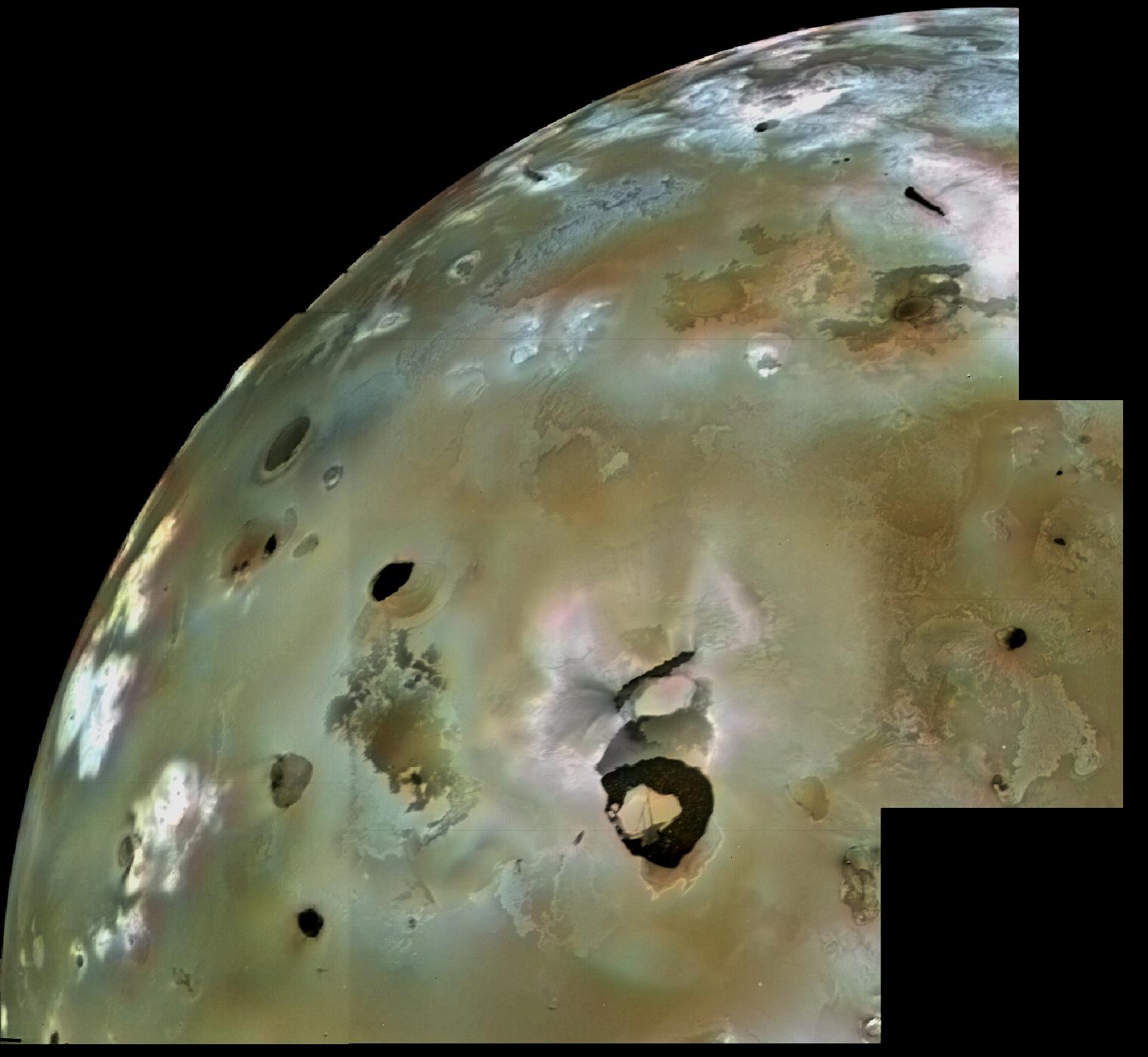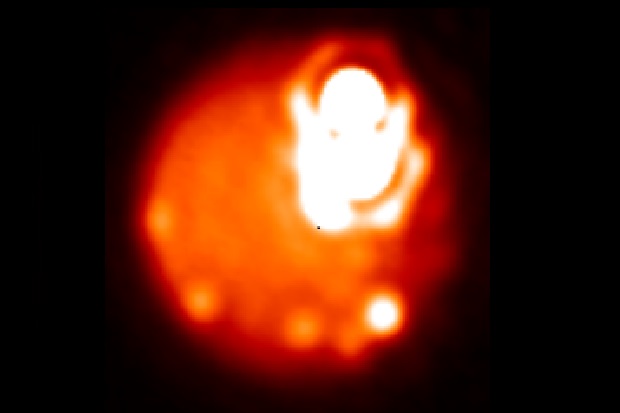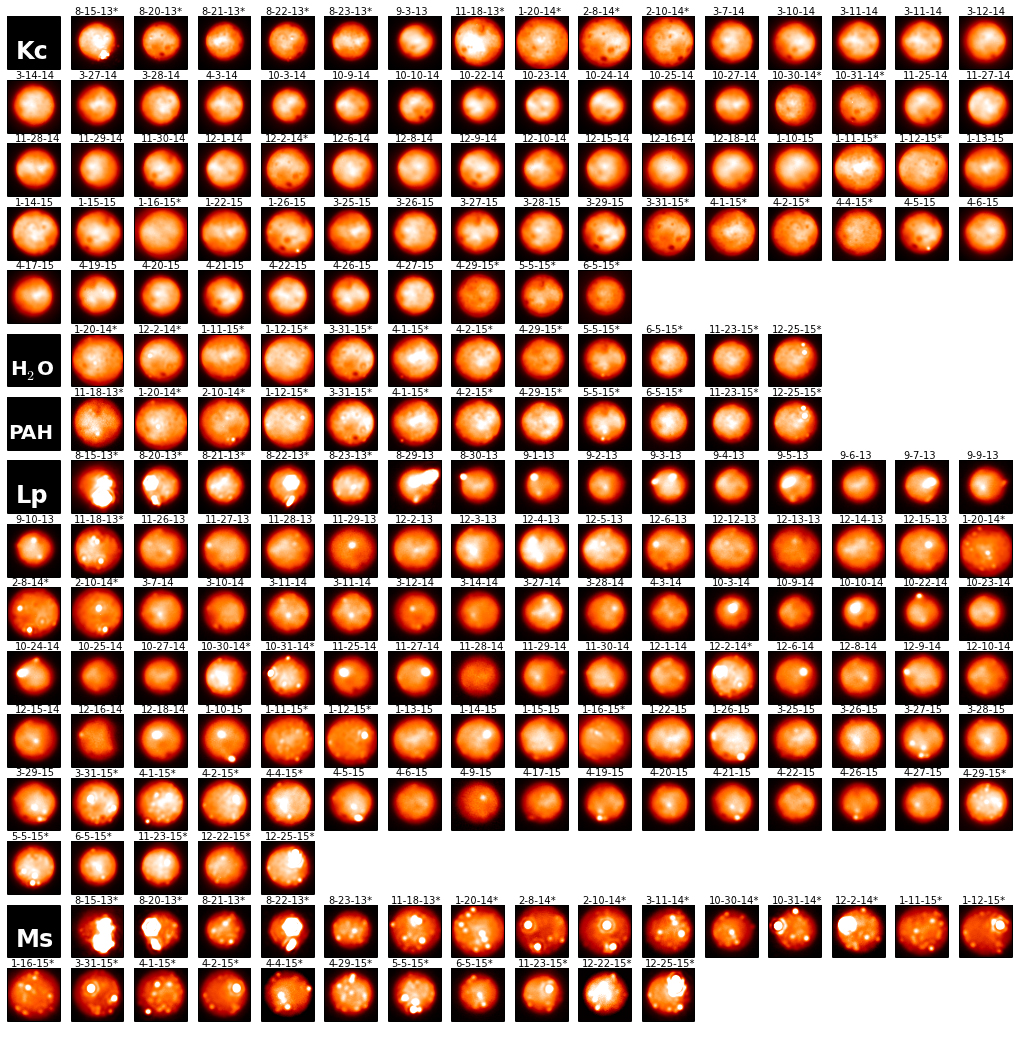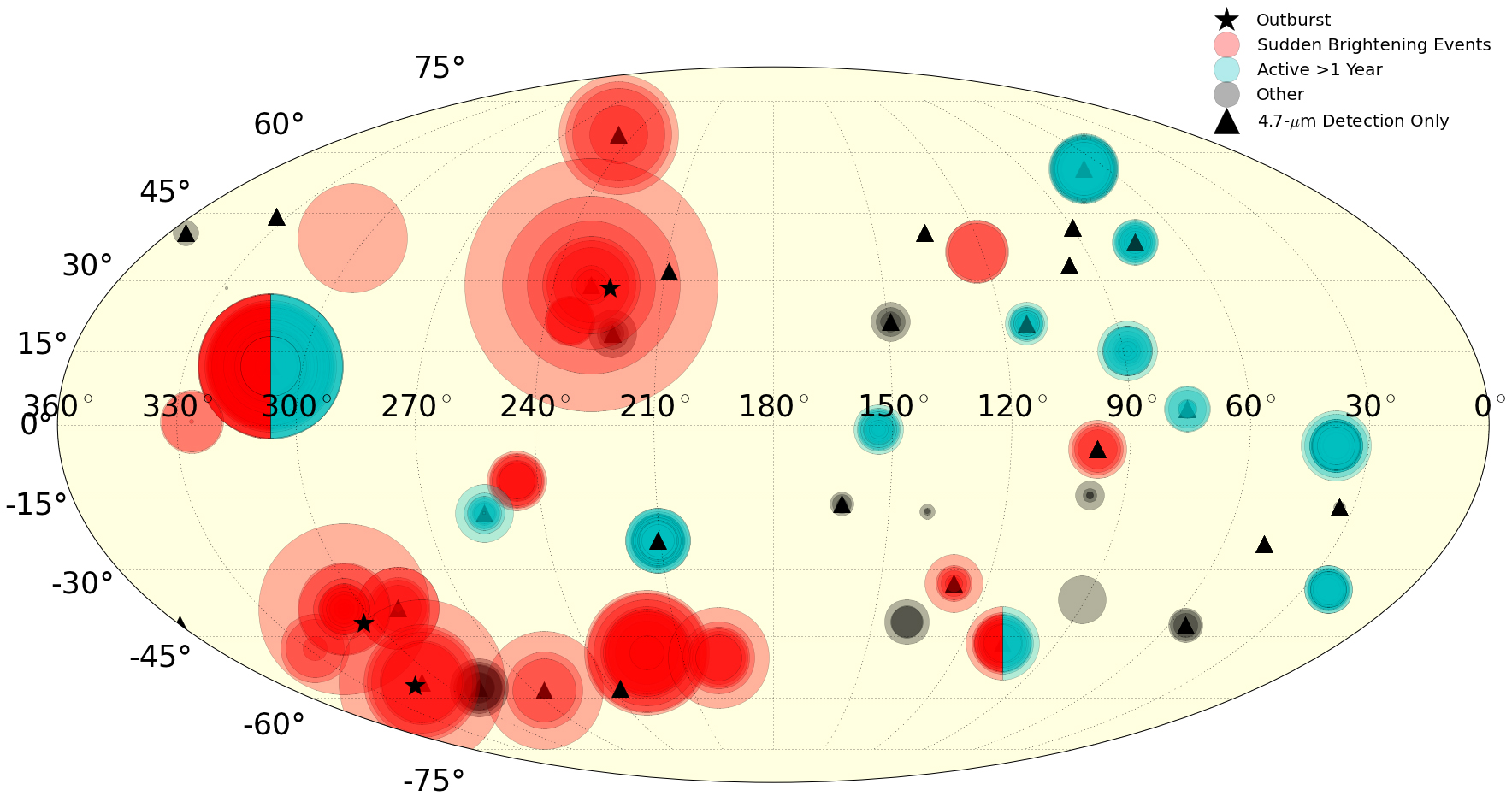Volcanic Eruptions on Jupiter's Moon Io Tracked Over Time

Two of the biggest telescopes on Earth have let astronomers capture some of the best views of long-term volcanic activity on Jupiter's moon Io.
Io is the most volcanically active body in the solar system. Using two of the world's largest telescopes, the 10-meter Keck II and 8-meter Gemini North, both located in Hawaii near the summit of Mauna Kea, astronomers from the University of California, Berkeley, tracked 48 volcanic hotspots over more than two years, from 2013 through 2015. [Amazing Photos of Volcanoes on Io]
The telescopes' adaptive optics systems use adjustable mirrors to cancel out the blurring effects of Earth's atmosphere. That means the telescopes can tease out features just a few hundred miles apart on Io, which is never less than 365 million miles away (587 million kilometers) from Earth. Io itself is about 2,200 miles (3,540 km) across.
"Of Io's hundreds of active volcanoes, we have been able to track the 50 that were the most powerful over the past few years," said Katherine de Kleer, a UC Berkeley graduate student who led the observations, in a statement.
De Kleer and Imke de Pater, a UC Berkeley professor of astronomy and Earth and planetary science, observed the heat of active eruptions and cooling lava flows. They were able to determine the temperature and the total power output of individual volcanic eruptions on Io.
Some eruptions appeared to trigger others, even hundreds of miles away. It isn't clear, though, exactly how that happens.
De Kleer and de Pater's findings will appear in the journal Icarus.
Breaking space news, the latest updates on rocket launches, skywatching events and more!
You can follow SPACE.com on Twitter @Spacedotcom. We're also on Facebook & Google+.

Jesse Emspak is a freelance journalist who has contributed to several publications, including Space.com, Scientific American, New Scientist, Smithsonian.com and Undark. He focuses on physics and cool technologies but has been known to write about the odder stories of human health and science as it relates to culture. Jesse has a Master of Arts from the University of California, Berkeley School of Journalism, and a Bachelor of Arts from the University of Rochester. Jesse spent years covering finance and cut his teeth at local newspapers, working local politics and police beats. Jesse likes to stay active and holds a fourth degree black belt in Karate, which just means he now knows how much he has to learn and the importance of good teaching.



